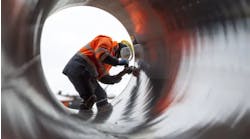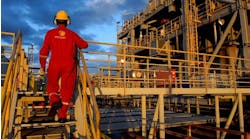Offshore staff
STAVANGER, Norway – Statoil (OSE:STL;NYSE:STO) is removing a 181-m (594-ft) long loading buoy from the Statfjord field in the Norwegian North Sea.
“The towing started on the night of Saturday,” says Bård Henning Borsheim, assignment manager for the Statfjord C loading buoy removal project. “We need good weather. That is why the loading buoy is being towed in July, when the probability of good weather is highest and the risk is lowest.”
Depending on the wind conditions, it could take six days to tow the more than 8,000-ton (7,257-metric ton) loading buoy to shore.
The buoy will first be anchored in the Yrkes fjord for up to two weeks to allow waste such as lighting fixtures, fire extinguishers, fire detectors, batteries, luminous tubes, and oil deposits to be removed before the structure goes onshore to be scrapped at AF Decom Offshore’s plant in Vats, north of Stavanger.
According to the OSPAR (Oslo-Paris) convention, offshore oil installations no longer in use must be removed where practicable.
The other two loading buoys on the Statfjord field already have been taken away and scrapped, and have been replaced by a new loading system.
Next month the company also plans to remove theTroll Oseberg Gas injection (TOGI) subsea template from the Troll field. On behalf of Gassco, the company has assumed responsibility for removing the 2/4S l jacket from the Ekofisk field center, along with the H7/B11 compressor platforms from the German sector of the North Sea, all previously integral to the trunkline network exporting Norwegian gas to Europe. They will be removed during 2013-2015.
One of Statoil’s major decommissioning programs will be the removal of Statfjord A, its oldest platform, which came onstream in 1979. Statfjord A should remain in production through 2016, but Statoil started preparations in 2010 and is working on an impact assessment for the proposed removal program.
7/17/2012


